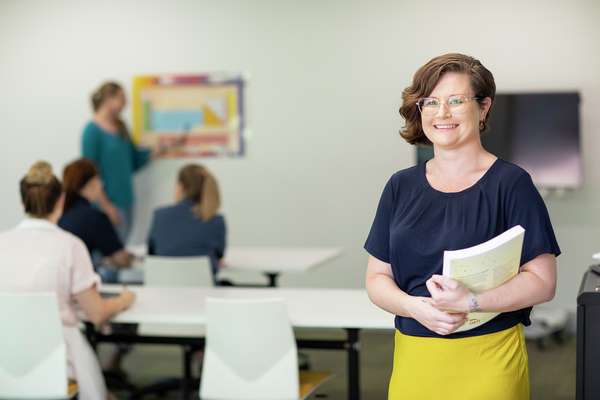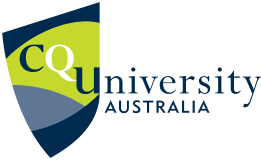Copyright for Teaching Staff
Copyright for your units
General Rules
- The University Copyright Policy mandates the use of eReading lists to provide access to copyright protected material for your units. Please see the Using eReading Lists page for further information on how to setup and use eReading lists.
- Resources are to be added to your eReading list rather than Moodle, unless it is lecture content or licensed for Moodle, for more details see Do I put this in my eReading list or on a Moodle page?
- It is best practice to link to where the resource was found rather than upload a copy.
What you can do
- Links to library provided ebooks can be added to your eReading Lists.
- Links to open access books and journal articles should be added to your eReading List, as they will be checked for copyright compliance by the library.
- The library can also assist by scanning one chapter or 10% of a print book, or one article from a journal issue, for inclusion in your eReading List.
You need to be aware
- You cannot upload scanned chapters and articles (digitisations) into your moodle site. These can only be provided via eReading Lists.
- If you want to include links to books and journals within your Moodle unit site, it is recommended that you add the work to your eReading lists and then create a link to the eReading list item in your moodle unit. This will ensure all changes to library access methods, including fixing broken links, will be automatically reflected in your Moodle site.
- If you link to material in your eReading list that is determined to be a breach of copyright the library team will work with you to source an alternate version.
Seek further advice or ask permission
- If you want to include textbook content within your lecture slides/materials you will need to adhere to the 10% or one chapter rule, and the same portion will also need to be available via your eReading list for copyright reporting purposes. If you need to include more than that you will need to see permission from the publisher or copyright owner.
- If you want to include supplementary material provided with a textbook, e.g. lecturer’s slides created by the publisher, then you will need to seek permission from the publisher to include these.
- If you are using licensed content you will need to ensure the license covers your intended use, including the location you want to place the material. There are examples where some licensed content is only allowed to be provided on the university learning management system (LMS) and not any other system.
Under the Copyright Act, content that has been broadcast on television or radio can be used for educational purposes without paying an additional licence fee.
What you can do
- You can include links in your eReading list to recordings of shows screened on television or broadcast on radio (off-air broadcasts). Off-air content is available via the Clickview Database.
- You can include copies of off-air broadcasts in your unit materials.
- The Clickview database, which is available from the library, provides you with access to this off-air content. This content can also be played in class as part of a lecture. If the lecture is recorded, then the recording can only be made available via a university password protected system (e.g. Moodle)
- You can link to content from any library subscribed video database in your eReading List (e.g. Kanopy videos). If you are playing this content as part of a lecture the recording should be stopped for the duration of the video. The content from these databases is provided under a separate licence and will not have the same conditions as off-air broadcasts.
- If CQUniversity is the copyright owner you are able to use this material without additional permissions.
You need to be aware
- You can play commercially released video content in your class provided that the use is for educational purposes, there is no admission fee charged and if the class is recorded the video content is not included in the recording.
- You cannot use your personal streaming video account (e.g. Netflix, Disney+, Stan) to show TVs or Movies to students in class. The licence you purchase this under is for “Individual” use only and does not cover you showing this material to your class.
- If you link to material in your eReading list that is determined to be a breach of copyright the library team will work with you to source an alternate version.
Seek further advice or ask permission
- If you want to copy a film, video or radio program which has not been broadcast, then you will need to seek permission from the film/radio producers. Your required use may mean that you will need to purchase a licence for the material.
Copyright in music is complicated. Copyright could be present in a number of forms:
- the music, that is the notes that make up the melody,
- the lyrics,
- the printed edition, that is the score, and
- the sound recording.
There are a number of different conditions you will need to consider when using music in your teaching. One important distinction you will need to be aware of that the method of capturing music changes the copyright conditions of music. Copyright in music differs depending on whether you have captured the music at the same time as the recording occurs (in context) or if it was added in post-production.
What you can do
- You can copy and make available to your students recordings of commercially released music recordings as long as it’s via a password-protected university site, e.g. Moodle or eReading Lists. The copied music recording can only be ‘streamed’ and not available for ‘download’ however.
- You can copy 10% of a music score and provide this to your students via eReading lists, in hardcopy or via lecture slides in Moodle.
- You can copy 10% of the music lyrics and provide these to your students via eReading Lists, in hardcopy or via lecture slides in Moodle.
- Perform a choral work of less than 20 mins in duration.
- Videos that contain commercial music that has been captured in-context (at the time of recording) can be stored on a university password-protected site (e.g. Moodle or eReading lists), streamed on the University website, and made available in physical format for free or at a cost recovery price.
- Videos that contain commercial music that has been captured in post-production (added after recording) can be stored on a university password-protected site (e.g. Moodle or eReading lists), and made available in physical format for free or at a cost recovery price. Note: Videos containing post-production included music cannot be made available on the university website
- Videos that contain university or student-performed music (e.g. music performed by a university student, orchestra or jazz band) can be stored on a university password-protected site (e.g. Moodle or eReading lists), streamed on the University website, streamed on official university social media channels and made available in physical format for free or at a cost recovery price.
You need to be aware
- Commercial sound recordings cannot be used in any social media platforms unless the music is licensed under a creative commons license, the music is in the public domain or permission/license has been received from the copyright owner.
- Universities are not permitted to remix, arrange, adapt, or mashup a work or recording.
- You cannot make any recordings containing music available for download on the internet. Streaming however is allowed, as indicated above.
Seek further advice or ask permission
- You will need to seek a special license to perform a Grand rights works. A grand rights work is usually a musical for which the music has been specifically written, like Phantom of the Opera, Hamilton, or Chicago.
- You will need to seek a special license to perform music in a Dramatic Context. Performing music in a dramatic context involves playing music in a live stage production that uses a storyline and has one or more narrators or characters.
- You will need to seek a license to perform a choral work of more than 20 mins in duration.
- You will need to seek a license/permission from the copyright owner to change the lyrics to a song or turn it into a burlesque.
What you can do
- A scan of a page from a print work containing an image can been included in your eReading list.
- A scan of an image from a print work, but not including the surrounding page of the print work, can be provided in your eReading list if the image is not available for purchase as a separate item or in a reasonable time at an ordinary commercial price.
- If the image is from an electronic source, e.g. a website, then the whole image can be used. There is no need to check whether this is available for separate purchase. This can be used in your eReading List, Moodle site or lecture materials. (Note: this is only for teaching/educational use and the same rule cannot be applied to non-teaching use).
You need to be aware
- When using an image in your materials it is best practice is to provide a citation of where you have sourced the image.
- If you have used an image that is provided under a Creative Commons licence you have to acknowledge the creator of the image when you use it. This is a standard part of the Creative Commons licence.
Seek further advice or ask permission
- If you are going to use the same images outside of the university or in a non-educational context then you will need to ensure the images you are using are provided under a creative commons licence, or that you seek permission for the non-educational use from the copyright owner.
- If you are purchasing images for use from a commercial image provider, make sure the licence covers your intended use and isn’t just for personal use.
Australian copyright law has not yet been updated to consider the implications of content created by Artificial Intelligence, such as ChatGPT or Adoble Firefly. Currently in Australia copyright is not present in works created by non-humans. However there is current debate underway about how much “independent intellectual effort” someone needs to apply when using AI tools before copyright is present.
As there is currently no copyright protection for content generated from AI tools, there are no limits (under copyright law) on the portion of these works that you can use. However, it is best practice to reference use of AI when sharing content. You should also be aware that, some AI tools have made use of content that has been uploaded without the permission of the copyright owner and this may have future legal implications.
Further information on this topic is available from the Australian Copyright Council Factsheet: Artificial Intelligence & Copyright.
There are some key issues you should also be aware of:
- Licence agreements for published papers or resources you access via ‘Library Search’ may prevent you from uploading them to an AI tool. Make sure you read the terms and conditions prior to uploading content to any AI tool.
- Some AI tools have made use of content that has been uploaded without the permission of the copyright owner and this may have future legal implications.
If you want to use AI generated content in your teaching materials you should follow the “Guidelines for Referencing Large Language Models or Artificial Intelligence in Assessments” to ensure you are meeting CQUniversity’s academic integrity requirements, and showcase to students how to reference this material.
For further information on use of AI in Teaching and Learning see the GenAI staffnet page.
Frequently Asked Questions
The general rule in Australia: 70 years from the end of the year in which the creator died or 70 years from the end of the year in which the material was first published (if not published during the creator’s life, or if the work was published anonymously or under a pseudonym).
Copyright can't be extended. If the copyright in an item has expired it is considered to be in the public domain, and you may use it without seeking permission or needing to comply with the conditions of the Copyright Act.
Unpublished material can have no expiration for copyright.
Find more information in the 'Duration of Copyright' sheet on the Australian Government Website.
The types of works copyright protects include:
- Artistic Works - paintings, photographs, maps, graphics, cartoons, charts, diagrams and illustrations
- Literary Works - novels, textbooks, poems, song lyrics, newspaper articles, computer software, computer games
- Film Works - melodies, song music, advertising jingles, film scores
- Dramatic works - plays, screenplays and choreography
- Films and Moving Images - Feature films, short films, documentaries, television programs, interactive games, television advertisements, music videos and vodcasts
- Sound Recordings - MP3 files, CDs, DVDs, vinyl and tape recordings, podcasts.
- Broadcasts - Pay and Free to air television and radio
Definition from Smartcopying The Official Guide to Copyright Issues for Schools and TAFE
Attribution is a reference to the creator of the content. If you use Creative Commons works such as images in your assignments, research, or lecture materials, you will need to attribute the the work to the author. For example, if you used a CC image, you would need to include a caption with the attribution. To attribute a CC work, include the following details:
- Title of the work
- Author / Creator of the work
- The URL of the original work.
- The specific CC license abbreviation, e.g. CC BY NC 4.0.
- If it is a work you were free to modify, add your derivative work's title and a note that it is a derivative work. Follow this with the details for the original work as above.
For more information see the CC Creative Commons organisation Best practices for attribution.
Referencing
Reference the work according to the guidelines for the style you have been asked to use. If it is an image, reference it as an image. The CQUniversity referencing guides page has free copies of the guides.
Generally, if you want to copy or share someone else’s work, you are likely to need permission (or a licence) from the copyright owner, unless:
- It is CQUniversity library provided material
- Or the copyright has expired Duration of Copyright
Some items can only be used If you obtain permission from the creator. A permission form and request template are available. The completed form MUST be submitted to the library via TaSAC.
Yes, but make sure you are adhering to the rules regarding videos containing music. If the students are performing the works and not using any commercial sound recordings then putting their recitals online would be covered for both the University website and official social media channels. If, however, your students have used a commercial sound recordings (for example they have sampled some Queen recordings and looped them as an accompaniment to their recital), then the use of the commercial sound recordings means that the student’s performance can only be streamed via the University website, not social media channels. It may be shared via the University LMS but not any public facing website.
Yes, even if they are streamed via a platform like Zoom or Teams. You need to consider though that in making a recording of lecture that contains music you must treat that audio-visual file according to the limitations surrounding how you captured the music (either in-context or post production) as detailed above.
As long as you are not illegally downloading or streaming the recording but instead purchasing the recording or stream from a legitimate provider, then this is considered ‘legally sourcing’ the recording. Please note however that if you are sourcing your recording from an online subscription platform (e.g. Spotify) then you will need to check the terms and conditions of your licence, as this may be for personal use only.
The university retains copyright ownership in course materials developed by employees during their course of employment. For further information see the Intellectual Property and Moral Rights Policy.
Training
Copyright basics and use in teaching
This module is for: Academic staff, Library staff, TaSAC staff and Moodle staff.

Copyright Basics
This is for staff who aren't listed under the Copyright basics and use in teaching training.

Open Access and Creative Commons
Learn how to utilise Open Access and Creative Commons content.


